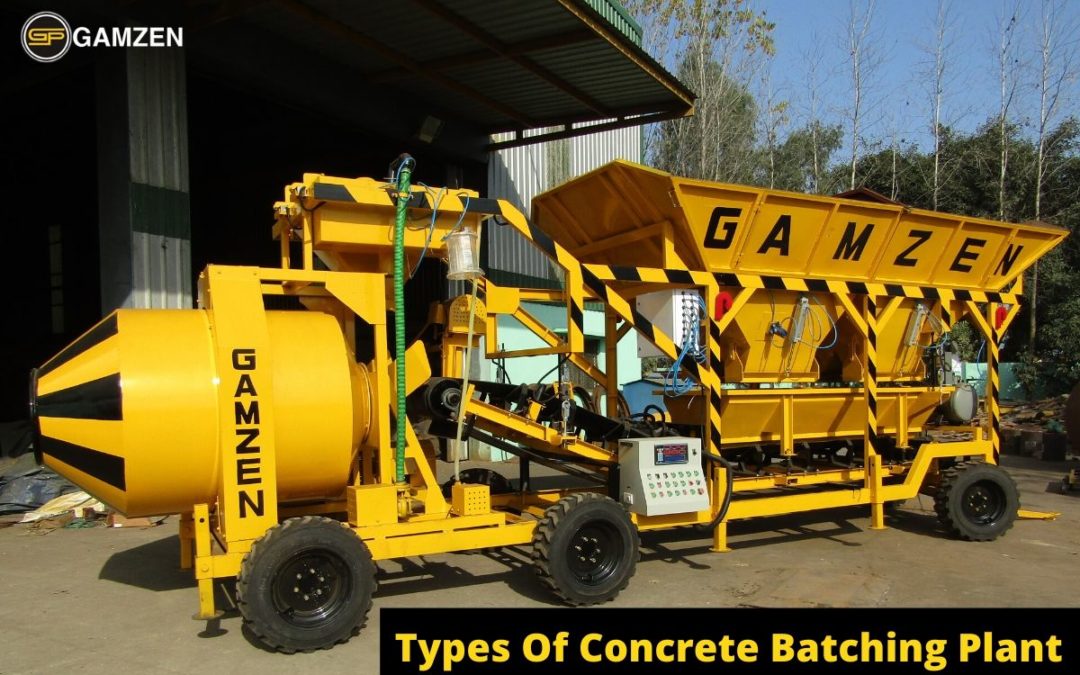Types Of Concrete Batching Plant And Its Functions
A concrete batching plant is an equipment that mixes various ingredients to make concrete. These materials include water, air, aggregates, cement and fly ash. A batching plant consists of a variety of parts and machines mixer unit, conveyors, aggregate and cement batchers, cement silos etc. The aggregate bin has two to six compartments for storing various sizes of materials like aggregates (rock and gravel) and sand. The cement silos usually have one or two compartments but may sometimes have up to four or six compartments. The conveyors are used to carry the aggregate from the ground hopper to the aggregate bin. They also carry the aggregate from the aggregate batcher to the charge chute. However, the heart of the batching plant is the mixer. The mixer comes in a variety of types like pan, planetary, tilt drum, single shaft and twin shaft, and planetary mixers. The pan or planetary mixer is commonly used in a precast plant. The tilt mixer is used for when a large batch of concrete mix is required. On the other hand, drum type mixers are the most cost-effective and require the least maintenance.
There Are Various Types Of Batching Plant As Per Your Site Requirement:
1. Stationary Concrete Plant:
This plant is designed to make concrete that is high grade in quality. It has qualities like large output, high specification, high stability and efficiency. It consists of reliable and flexible components, is easy to maintain and has a low failure rate. It can be used for various projects like building roads, bridges, tunnels, buildings, ports and dams.
2. Mobile Concrete Plant:
This batching plant is also known as a portable concrete plant that is extremely cost-effective and efficient equipment to produce batches of cement. With the mobile concrete plant, you can batch concrete at any location. This portable plant is the best choice if you have temporary projects or in stationary sites where big equipment won’t fit.
3. Transit Mixers:
It also called the Dry mix concrete plant. It weighs gravel, cement, and sand in weigh batchers using digital or manual scales. All the materials are then poured into a chute which opens into a truck. Simultaneously, water is being weighed or volumetrically metered and released in the same charging chute into the mixer truck. These materials are combined for at least seventy to a hundred revolution while being transported to the job site. IT IS PREFERRABLE TO INSTALL CONCRETE PLANT AT SITE AS YOU GET FRESH CONCRETE DIRECTLY.
4. Wet Mix Concrete Plant:
This concrete plant mixes some of all of the aforementioned materials at a single point i.e. the central location into a concrete mixer. The mixture is then agitated so that it doesn’t settle on the way to the job site. The wet mix concrete plant differs from the dry one as the dry mix plant can form a consistent mixture in less than five minutes.
Generally, concrete plants are used for ready mix, civil infrastructure, and precast applications.
Operation Of A Concrete Batching Plant
There are five primary functions of concrete batching plant:
1 Controlling the quality of concrete: Proper aggregate weighing system. Proper cement and fly ash weighing and feeding system. This is also called power feeding.
2. Proper Water control system: Water aids in the even binding of cement with the aggregates. The water should be added in a specific quantity.
3. Storage and conveyance: This is the term used for the storage of additives, cement, fly ash, etc. They have to carry the quantity in bulk and move small quantities through the screw conveyor to the weighing hoppers.
4, Proper ad-mixture control system.
5. Control system: The control system makes sure the entire operation happens quickly and accurately. It synchronises all the above systems.

